Plant appreciation day gives us all a great excuse to go out into nature, improve our identification skills and learn more about our local biodiversity. However, even if you’re stuck inside this year or put off by April showers, there’s still so much you can learn to celebrate your roots.
The best plants you’ve never heard of this Plant Appreciation Day
1. Herb-Paris (Paris quadrifolia)
Herb-Paris is an ancient woodland indicator species that can often be found in the damp, chalky soils associated with Wiltshire. Characterised by their egg-shaped leaves and peculiar flowers, they’re always an underrated showstopper in early spring.
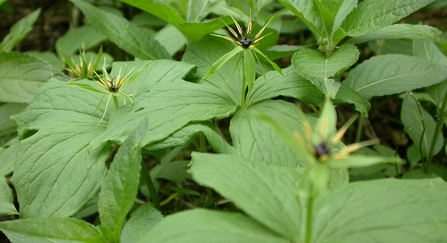
WildNet - Philip Precey
2. Moschatel (Adoxa moschatellina)
Also known as the “Townhall Clock”, Moschatel can be difficult to spot due to their small size and petite flowers. They have a relatively short flowering period between April and May, sometimes earlier in mild winters, so don’t blink because you just might miss them!
If you are fortunate enough to find one though, study the flowerhead. There, you will be able to identify the five ‘clockfaces’ that gave this plant its iconic namesake.
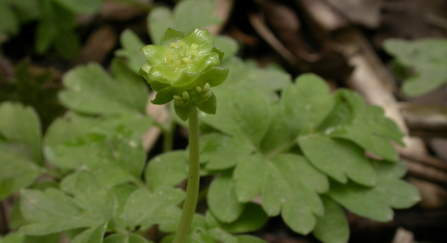
WildNet - Philip Precey
3. Opposite-Leaved Golden Saxifrage (Chrysosplenium oppositifolium)
This damp loving species can be found alongside rivers, glowing golden in the dappled sunlight. Much like their name, each stem consists of mirrored leaves forming pairs, resembling clusters.
If you look closely, within each cluster you will find a small yellow flower which almost floats above the sea of greenery. It’s a stark contrast to the dense carpet beneath them but a sure sign that you’re not too far from a water source (or perhaps you’ve just stumbled into a wet woodland…)
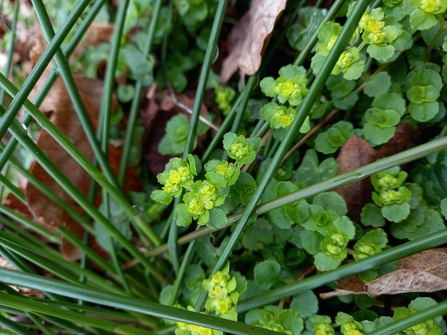
Opposite leaved golden saxifrage. Credit: Charlotte Dacre.
4. Pignut (Conopodium majus)
A late bloomer, Pignut can be spotted between May and June across a range of habitats here in Wiltshire. As a member of the carrot family, Pignut displays the usual tall hallow stem, white flower characteristics associated with the umbellifers.
Don’t let the flower clusters fool you, though. Check the base of the stem to reveal fine, herb-garden-lookalike leaves (sometimes withered) to secure your identification. If you’re on the chalkland downs and you think you’ve spotted Pignut, check the leaves. If none are present, it’s more likely to be Great Pignut (Bunium bulbocastanum), which flowers until July.
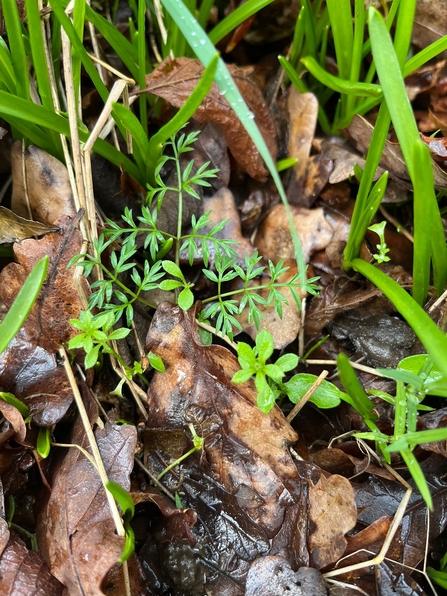
Pignut. Credit: Charlotte Dacre.
As part of the ancient woodland inventory update, we are hosting a range of online training webinars as well as voluntary opportunities (including amateur surveying).
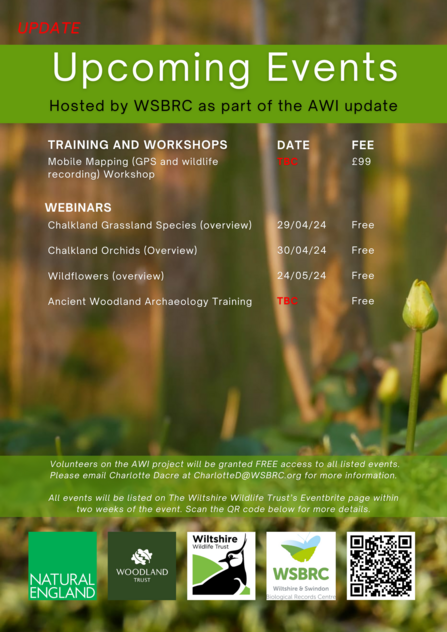
If you’re interested in learning more about the project, voluntary experiences, or would like to submit an ancient woodland indicator record, please contact Charlotte Dacre directly at CharlotteD@WSBRC.org.

